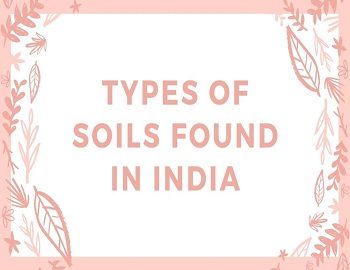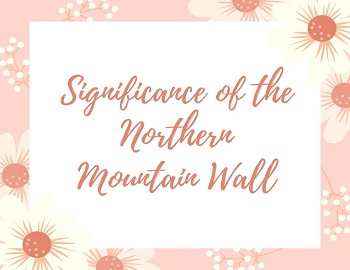Types of Soils Found in India:
The uppermost layer of Earth’s crust capable of growing and developing vegetation is called soil. Soil is humus-rich loose rock material. It provides moisture and food to grass, plants and trees.
Soil gives us food, cloth and other necessities of our daily life directly or indirectly. Parent rock, relief, climate, vegetation, man and other organism assist in soil formation. India has great variations in its relief, climate and vegetation. Hence, we have various soils. It is very difficult to put them into certain classes. Indian Agricultural Research Institute has classified soils of India into the following four classes-
- Alluvial Soils.
- Black Soils.
- Red Soils.
- Laterite Soils.
Alluvial Soils are formed by the deposition of debris brought by rivers. The Great plains, Gujarat plain and deltas of the Mahanadi, the Godavari, the Krishna and the Kaveri abound in alluvial soils. They are very fertile, rich in nitrogen, humus, phosphoric acid, lime, and organic matter, but they are deficient in phosphates. Conglomerate deposits in piedmont plains are known as Bhabar, Old alluvium as Bangar and new alluvium as Khadar.
Black Soils, also called cotton soils or regur soils, have come into being by the solidification of lava spread over large areas during volcanic activities thousands of years ago. On the Deccan Plateau, Maharashtra, Gujarat, Madhya Pradesh, parts of Tamil Nadu and Coromandel coastal plain are regions of Black soil. Black Soils are clayey. They are capable of sustaining moisture for long periods. In dry and hot season moisture is evaporated and they develop cracks. During rains they become sticky. Calcium carbonate, magnesium carbonate, potash and lime are abundantly found in them. They lack in phosphoric acid, nitrogenous and organic contents.
Red Soils have developed in the tropical and dry areas of Peninsular India- Kerala, Tamil Nadu, Andhra Pradesh, Karnataka, Orissa and South Bihar. These soils lack nitrogenous, organic and phosphoric contents. Hence they are less fertile. Millets are chiefly grown in them. In deep depressions, Red Soils are loamy while on uplands they contain loose gravels and are not fertile.
Laterite Soils are formed due to leaching processes in the tropical heavy rain areas. They are not suitable for agriculture but for grass, bushes and shrubs. Western Ghats, Chota Nagpur Plateau, parts of Orissa, Andhra Pradesh and Tamil Nadu are known for Laterite Solis.
Other soils include Mountain Soil. They are found in the Himalayan region. According to elevation, mountain soils differ in shape, colour and characteristics. Desert Soils come into being with the loess deposited by wind. Thar Desert is known for this type of soils.









Comments (No)